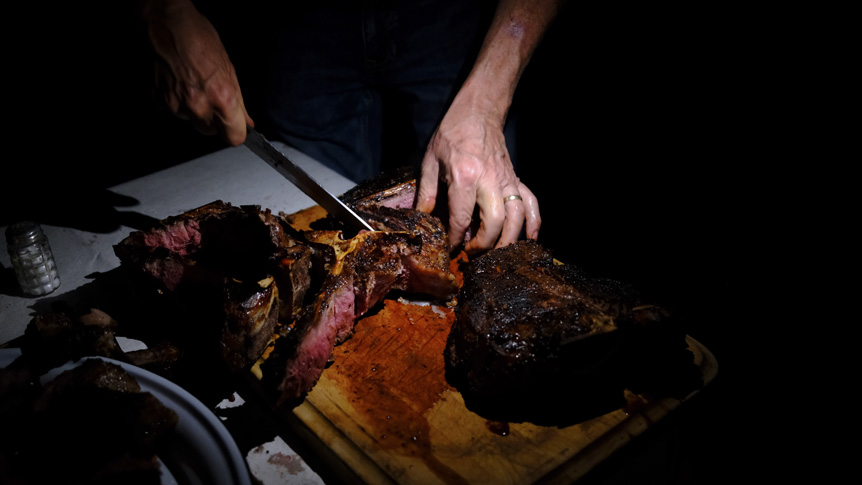
 5 minute read
5 minute read
Fixed-Lens Cameras: The Beauty of Simplicity
Uncover the allure of fixed-lens digital photography and learn how it could feed your creativity
Camera technology is in a constant cycle of improvement. Ever-more powerful sensors and processors are paired with increasingly sophisticated lenses in an unending search for optical perfection.
But while all this complicated technology empowers image makers to break new boundaries of creativity, in the photography world there is a lot to be said for keeping things simple. A perfect way to do that is to use a fixed-lens camera.
What is a Fixed-Lens Camera?
A fixed-lens camera is a camera body with a single, permanently attached lens.

Many mirrorless cameras use interchangeable lenses, allowing users to swap out their optic depending on what kind of image they want to create. This makes cameras incredibly versatile, allowing the same body to be used at many different focal lengths that cover anything from ultra wide-angle to super telephoto. The only limiting factor is how many lenses a photographer can carry.
A fixed-lens camera, such as FUJIFILM X100VI has the inverse design philosophy: one body and one lens. Reducing complications allows photographers to place more concentration on the act of creating.
What Are the Benefits of a Fixed-Lens Camera?
Creative Focus
The main advantage of a fixed-lens camera is that it simplifies the entire photography process. Being limited to the lens attached to the body means there will be no gear indecision, allowing users to focus on what they came to do – make images.

Photo 2023 © Rinzi Ruiz | FUJIFILM X100V, 1/500 sec at F8, ISO 200
Convenience
There’s no bag of extra gear to haul around. No scrambling to switch to the right lens before the photo opportunity is missed. Fixed-lens cameras take things back to basics.
Although, that’s not to say they are merely beginner cameras. In fact, fixed-lens cameras are popular among both newcomers and advanced photographers, due to the purity of the experience they offer. Their practicality allows users to remain in the moment.

Portability
The lightweight design of these cameras also makes them a great deal more portable than most interchangeable-lens bodies. In a fixed-lens camera, the lens is optimally designed to fit the body, improving optical performance while reducing weight and granting a smaller profile. That means they can be stored in a jacket pocket and brought anywhere – they’re almost as portable as a phone, but many can make higher quality photographs.
Fun
In essence, the simplicity of a fixed-lens camera can help maintain the fun of photography. For beginners, the no-frills approach keeps things simple, while many more experienced image makers say that a fixed-lens camera reminds them why they fell in love with photography in the first place.
Who Should Use a Fixed-Lens Camera?
Fixed-lens cameras are well suited to street, documentary, travel, and everyday photographers – essentially, anyone creating images in a style that requires them to be in the moment and quick to react.
Despite their small size, many fixed-lens cameras enjoy high levels of specification. They are built with high-resolution image sensors and first-rate optical engineering, so are more than up to the task of creating professional-looking images. While, outwardly, their design philosophy can be minimalist compared to flagship mirrorless models, under the hood, fixed-lens cameras still contain all the modern technology image makers have come to expect.

Photo 2023 © Rinzi Ruiz | FUJIFILM X100V, 1/640 sec at F5.6, ISO 200
A good fixed-lens model is perfectly capable of being a workhorse camera for the professional user – particularly anyone who wants to prioritize a machine that’s lightweight, discreet, and uncomplicated.
These models also make for excellent second cameras on more specialized jobs, like weddings or events; something compact and reliable that can be grabbed and used even when halfway through changing the lens on your main body.
Due to their size and simplicity, fixed-lens cameras are also great for non-professional applications – being slung in a bag or pocket and simply used to record memories.

Photo 2023 © Aaron Anderson | FUJIFILM X100V, 1/2000 sec at F2, ISO 160
What Makes a Good Fixed-Lens Camera?
Lens
This one’s important, as it’s not going anywhere. A good fixed-lens camera will have a well-built optic offering crisp visuals and excellent clarity. A large maximum aperture is preferred, allowing for classic-looking portraits and beautiful bokeh.
Sensor
Quality is critical for any camera, but for models using a fixed prime lens, having a sensor with higher resolution grants the ability to use digital zoom, removing the absolute limitation of composing at a single focal length.
For example, FUJIFILM X100VI has a digital teleconverter function – allowing users the option to make images at the 35mm-equivalent focal lengths of 35mm, 50mm, and 70mm. Thanks to its 40.2-megapixel X-Trans CMOS 5 HR sensor, images can be cropped into while retaining image clarity and detail.
Build
Considering the type of photography fixed-lens cameras innately encourage, it only makes sense for them to be as small and lightweight as possible. Any benefits of leaving your bag of lenses at home would be wiped out by a bulky, heavy fixed-lens camera.
Also, as a natural fit for travelers, a robust build quality is a definite bonus.
Features
Just because a camera has a so-called ‘simplified design’, that doesn’t mean it should be lacking in creature comforts. A good fixed-lens camera should come equipped with responsive autofocus, a lasting battery life, and all the imaging capabilities expected from a modern camera body.

For more information about Fujifilm’s fixed-lens camera, learn more about X100VI and read the full specification here.
Learn more about photography with our Fundamentals series, or browse all content on Exposure Center for education, inspiration, and insights from the world of photography.























































